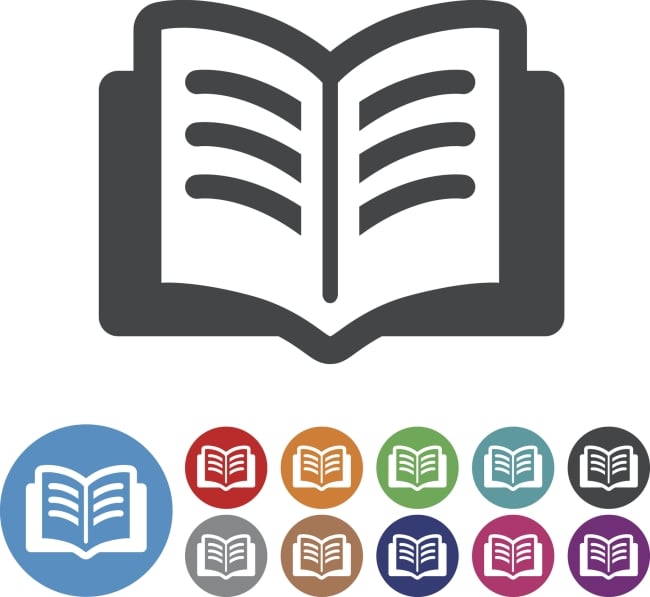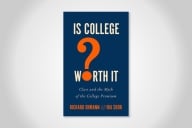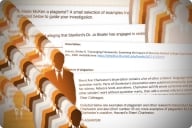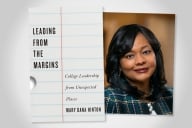You have /5 articles left.
Sign up for a free account or log in.

iStock
The textbook publishing industry is considering a transformation that could significantly alter how faculty members assign readings, publishers make money and students obtain course materials.
For years, that transformation has been portrayed as a shift from physical textbooks to digital course materials, but that description doesn’t capture underlying changes in how course materials are delivered and paid for as the industry moves away from transactions and toward subscriptions.
That strategy is emerging as the industry faces pressures from all sides. Technology has given students new ways to obtain information. The rental and used book markets have cut into publishers’ bottom lines. Open educational resource providers have sprung up to offer free or affordable alternatives to traditional textbooks. And while the cost of textbooks continues to rise, some studies show students now spend slightly less on course materials than they did a decade ago.
Pearson is the latest company to feel the impact of those changes. The company this month said it experienced an “unprecedented” decline in the North American courseware market last year as revenues fell by 30 percent in the fourth quarter. Changing its 2017 outlook from stable to negative, the company slashed e-textbook rental prices and launched a new print rental program. Its stock dropped nearly 30 percent in response to the news -- the largest one-day drop the company has ever seen.
“In some ways I believe that is a long-coming wake-up call for the industry,” Peter J. Cohen, president of McGraw-Hill Education’s U.S. education group, said in an interview. “We and the rest of the industry are recognizing that the days of what had been a high-priced textbook is over.”
McGraw-Hill Education and other publishers are growing increasingly interested in a model called, among other things, all students acquire, day-one access, digital direct access and inclusive access. They generally refer to the same thing: Instead of shopping for their own textbooks, students pay a course fee that provides access to course materials -- delivered digitally unless students pay extra for a print-on-demand copy -- on the first day of class.
The inclusive-access model, common at some for-profit colleges but gaining traction in other sectors of higher education, has previously been described as a “win-win-win” situation. Colleges can point to fewer students who go without course materials and to -- they hope -- improved student outcomes. Publishers gain more reliable, recurring revenue. And students, since few of them tend to opt out from the model, benefit from volume discounts, meaning they end up paying less for their course materials than if they had shopped for a traditional print book or ebook.
Cohen said McGraw-Hill Education now wants to work with other publishers and the Association of American Publishers to “evangelize” and expand the inclusive-access model, an indication that the industry is endorsing some of the efforts it is seeing to change how it operates.
A spokesperson for the AAP said in an email that “concept of providing students with day-one access to their course materials at a lower cost is a top priority” for the association.
“As an industry, it’s incumbent upon us to sit down with our university and community college partners and talk about how we ensure that every student has access to the materials on the first day of class and every student can afford the materials that are required for the class,” Cohen said. “Between us, if we sit down and say let’s solve the problem, we can work together and provide an affordable solution.”
“That’s the philosophy,” he added. Any sort of meeting between the AAP, publishers and various colleges has not yet taken place.
A ‘Fundamental Pivot’
While publishers debate how best to promote the inclusive-access model, universities and start-ups are putting it to the test.
Indiana University’s inclusive-access model started as a pilot in 2009. By the 2015-16 academic year, more than 40,000 students got at least one textbook through what the university calls its eText initiative. The program passed $10 million in revenue last summer and has over the last several years posted double-digit growth. After seeing 43 percent year-over-year revenue growth last year, the eText initiative is this year on track to grow by even more -- 56 percent.
Bradley C. Wheeler, vice president for IT and chief information officer at IU, said the university isn’t doing anything different with the program today than it did eight years ago. It’s just that more faculty members are choosing to assign eTexts (for the program is opt in, not out), he said -- a development he attributed to a combination of faculty members and students growing more comfortable with reading and studying digitally, increased attention to the affordability of higher education, and the maturation of reading software.
Now that students are buying tens of thousands of books through the program, its partnering publishers -- it has about two dozen -- are “looking very, very favorably” at it and similar models, Wheeler said. But that wasn’t always the case.
“They were reluctant in the first days,” Wheeler said. “We dragged them there.”
IU also had to drag the publishers’ prices down. When they began negotiating, publishers saw the model as a way to cut out the middleman -- the bookstore -- but charge students about two-thirds of list price, Wheeler said. They eventually agreed that students would pay about 32 to 35 percent of list price. Today, average prices have dropped by a few percentage points, into the 20s. In other words, a textbook listed for $100 costs $20-30 through the eText initiative.
To be able to offer those discounts, IU had to get publishers on board with what Wheeler called a “fundamental pivot,” shifting them toward more predictable revenue streams.
Normally, publishers can count on a healthy return when they release a new edition of a popular textbook. In subsequent semesters, they see a significant drop-off as the used and rental book markets fill up with textbooks sold back by students who bought the edition when it was brand-new. The decline continues until the publisher releases an updated edition, restarting the cycle. Of course, publishers make nothing from the resale market.
“I don’t work in the publishing industry, but my perception is that the publishers are at a point where they have to do something materially different,” Wheeler said. “They’ve been working their rear ends off to hit that next quarter … on the old model, and it’s just really beginning to fail them wholesale.”
The inclusive-access model, in a nutshell, levels out the spikes and lulls. Students consistently pay course fees to access course materials every semester -- regardless of when a new edition was published.
Cohen, of McGraw-Hill Education, described the publishers’ traditional business model as “lumpy,” and compared the inclusive-access model to how companies that provide software as a service make money.
“It’s lower revenue for us per student, but more consistent revenue over time,” he said.
Opening Up the ‘Black Box’
Beyond revenue, the model also gives publishers access to something else of value: data.
Reading activity was once a “black box,” Cohen said, but when virtually every student in a course is using the same platform to study, publishers can gather usage data that could influence changes made to future editions of the course materials. Faculty members, meanwhile, can consult a dashboard to see the topics students struggle with and alter their lectures accordingly, he said.
“We think access to this data is incredibly powerful,” Cohen said. “We have the constant ability to monitor the quality of both our assessments and the content, and we’re able to improve them.”
The publishers are beefing up their capabilities in the digital learning market. McGraw-Hill Education has acquired four ed-tech companies since 2013: ALEKS, Area9, Engrade and Redbird Advanced Learning -- all of them providers of learning platforms.
Macmillan Learning is doing the same. Its recent acquisitions include the online writing took WriterKEY and, as recently as this month, educational platform provider Intellus Learning.
Ken Michaels, CEO of Macmillan Learning, said in an interview that he views the company as a "facilitator of education" in a larger ecosystem. He said technology is creating a need to be transparent about which course materials work best for students -- regardless of whether they comes from commercial publishers or other providers.
“I really want to enable professors and administrators to have the black boxes … to be able to link outcomes to curriculum to delivery to learning objectives to learning objects,” Michaels said. “That’s how we’re trying to move the industry -- to give the controls to the professionals that we partner with and not try to keep it within our intelligence for our business models and for our profits.”
Inclusive, but How Open?
Even campus bookstores -- which could be threatened by publishers delivering course materials directly to students -- want in. The National Association of College Stores, a trade association representing more than 3,000 stores, in 2015 led a $2 million investment round in RedShelf, a Chicago-based start-up that works with bookstores to bring inclusive access to colleges. The association participated in a follow-up round in 2016.
“As the course materials and retailing experts on campus, the professionals who manage the institution’s store should play a key role in making decisions about course materials and related services supporting student success in the future,” a spokesperson for the NACS said in a statement.
To RedShelf, Pearson’s results from the fourth quarter of 2016 are “like a dam breaking,” said Tim Haitaian, the start-up's chief financial officer. “We’ve been watching the cracks for a year or more [and] talking to the towns downstream about how things are going to change.”
RedShelf works with about 540 independently owned and operated campus bookstores to build the “pipelines” that enable faculty members to use the inclusive-access model, Haitaian said. The company has partnerships with more than 400 publishers and offers their content through an e-reader platform. It also offers a print-on-demand program for students who want a physical textbook (for which they pay an additional $20 or so).
Federal law requires colleges to give students the opportunity to opt out, but few do. According to RedShelf’s numbers, less than 6 percent of students choose to get their course materials from other providers on average.
That high sell-through rate may be a dream to publishers, but to others, it is raising questions about who truly owns the content.
David Harris, editor in chief of the free textbook publisher OpenStax, which is based at Rice University, said in an email that he is concerned about students being confined to a proprietary model that limits access and eventually cuts it off completely. In the case of RedShelf, for example, publishers set how many pages students can read offline and how many pages they can print, and restrict reading to one device at a time.
“Open educational resources are more than free books,” Harris wrote. “They present opportunities to enhance academic freedom, and they allow students permanent, unrestricted access to the materials they need most, supporting truly inclusive access.”
David Wiley, chief academic officer at Lumen Learning, touched on the same concerns in a blog post reflecting on the evolution of open educational resources.
"If the OER community doesn’t recognize that and start providing and promoting viable alternatives to publishers’ platforms, the best possible future for OER is being locked down inside a Pearson MyLab playing second fiddle to proprietary content," Wiley wrote. Lumen Learning helps faculty members use open educational resources in their courses.
IU was also concerned about students being forced to use multiple software platforms to access their course materials. The university decided to bring its own platform to the negotiating table and pay only for the publishers’ content. But that platform, too, cuts off digital access once students are no longer enrolled at the university.
There is also the issue of academic freedom. Forcing faculty members to use one model for assigning course materials could quickly backfire. Wheeler stressed that the growth of the eText initiative at IU is organic -- that is, that faculty members are volunteering (though sometimes after requests from students).
Those concerns, combined with the fact that smaller companies and universities themselves are promoting inclusive access, may explain why some major publishers are content with simply “evangelizing” for a model they could stand to benefit greatly from.
“We used to push products and, frankly, that’s what we had to do, but technology is changing that,” Michaels, of Macmillan Learning, said. “It really comes down to what students need to be successful and how professors and universities want to approach the delivery of knowledge. Our role is to facilitate and help them. It’s a very different mind-set.”








